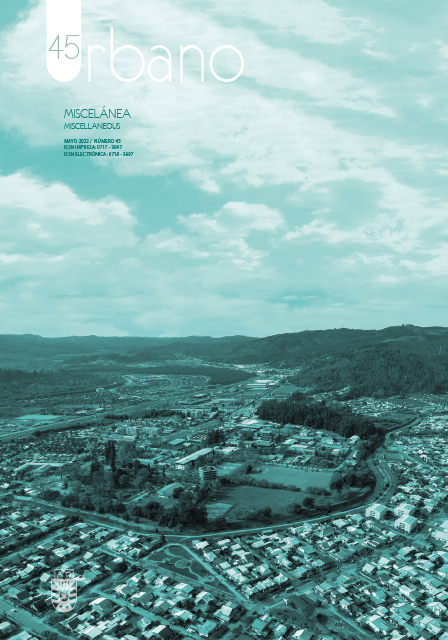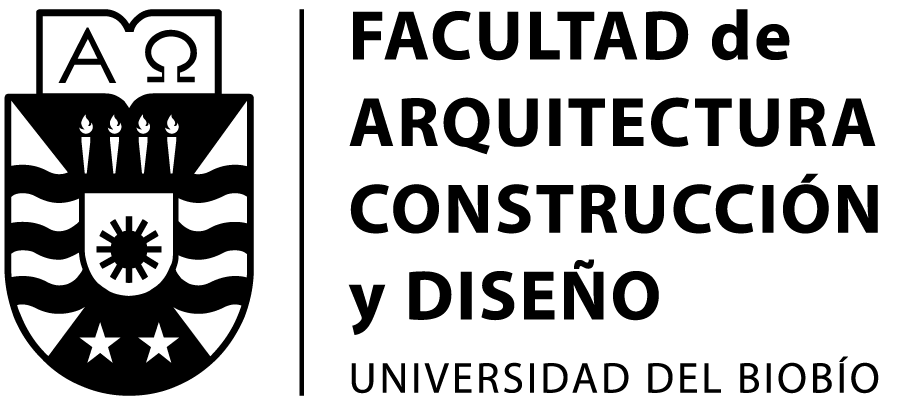Sustainability of urban heritage. Case study in Altea and La Vila Joiosa (Alicante, Spain)
DOI:
https://doi.org/10.22320/07183607.2022.25.45.06Keywords:
sustainability, urban heritage, public space, tourismAbstract
Historical ensembles are urban areas of considerable heritage interest. They are foundational spaces of the city originally intended for habitat. They have represented a paradigm of the notion of the neighborhood, and a benchmark for a sustainable urban, social, and economic model in European Mediterranean culture. The tourism phenomenon can be a valuable tool to boost the economy in these areas, but there is a risk that urban sustainability will end up leading to mere economic exploitation. This research makes a case study on two historical ensembles of the Spanish Levante, representative of Mediterranean urban culture, which are undergoing these processes, Altea and La Vila Joiosa. An analytical methodology has been used based on multidimensional urban sustainability indicators that are more oriented towards the functional and social than the material. The results show convergences with the main studies on this theoretical framework, but also some nuances derived from the economic, social, and cultural particularities of the groups analyzed in terms of population, housing, and uses. The conclusions emphasize the importance of establishing the urban image, relying on citizen rooting, avoiding the privatization of public space, and focusing on sustainable tourism.
Downloads
References
ANDRÉS, J. L. (2005). Conflictos y estrategias en la gestión urbanística de las ciudades históricas. Papeles de Geografía, (41-42), 29-49. Recuperado de https://revistas.um.es/geografia/article/view/44231
ALEDO, A., MAZÓN, T. y MANTECÓN, A. (2007). La insostenibilidad del turismo residencial. En Lagunas, D., Antropología y turismo: claves culturales y disciplinares (pp. 185-208). México, D.F.: Plaza y Valdés,.
BOHIGAS, O. (2004). Contra la incontinencia urbana: reconsideración moral de la arquitectura y la ciudad. Barcelona: Electa.
BORJA, JORDI. (2012). Revolución urbana y derechos ciudadanos: Claves para interpretar las contradicciones de la ciudad actual. Barcelona: Universidad de Barcelona.
CARRIÓN, F. (2003). Sostenibilidad de los Centros Históricos de América Latina. Quito: Flacso. Recuperado de http://www.flacso.org.ec/docs/artsoschal.pdf
Consell de la Comunitat Valenciana (2021). Decreto 10/2021 de aprobación del reglamento regulador del alojamiento turístico en la Comunitat Valenciana. Recuperado de https://dogv.gva.es/datos/2021/02/08/pdf/2021_999.pdf
FARIÑA TOJO, J. (2018). Turismo, imagen urbana e identidad. Estudios turísticos, (216), 9-26. Recuperado de https://oa.upm.es/62647/1/Turismo_imagen_identidad.pdf
FERNÁNDEZ, V. y SILVA, R. (2016). Deconstruyendo los paisajes culturales de la Lista del Patrimonio Mundial de la Unesco. Cuadernos Geográficos, 55(1), 176-197. Recuperado de https://www.redalyc.org/pdf/171/17146265007.pdf
GARCÍA-DOMÉNECH, S. (2017a). El rol del espacio público en la sostenibilidad de la ciudad contemporánea: la cultura urbana mediterránea en Europa. Revista AUS. Arquitectura, Urbanismo, Sustentabilidad, (21), 44-50. DOI: https://doi.org/10.4206/aus.2017.n21-08
GARCÍA-DOMÉNECH, S. (2017b). La polisemia de lo común en el espacio público urbano. Cuadernos de Vivienda y Urbanismo, 10(20), 68-78. DOI: https://doi.org/10.11144/Javeriana.cvu10-20.pcep
GARCÍA-DOMÉNECH, S. (2021). La identidad del paisaje urbano. Arquitectura, arte, espacio público y sociedad: tres casos consolidados. Bitácora arquitectura, (47), 96-105. DOI: https://doi.org/10.22201/fa.14058901p.2021.47.80349
GIUSSANI, S., LUENGO, M. H. y Poujol, G. (2010). Impacto del turismo sobre el metabolismo urbano y la sostenibilidad de las ciudades intermedias mediterráneas. Sustainable Building Conference. Recuperado de https://www.researchgate.net/profile/Maria-Luengo-2/publication/326829590_IMPACTO_DEL_TURISMO_SOBRE_EL_METABOLISMO_URBANO_Y_LA_SOSTENIBILIDAD_DE_LAS_CIUDADES_INTERMEDIAS_MEDITERRANEAS/links/5b65b9b4aca2724c1f22e5ef/IMPACTO-DEL-TURISMO-SOBRE-EL-METABOLISMO-URBANO-Y-LA-SOSTENIBILIDAD-DE-LAS-CIUDADES-INTERMEDIAS-MEDITERRANEAS.pdf
GLICK, R. (1992). Desarrollo Urbano. Bogotá: Editorial Guadalupe.
HERNÁNDEZ, A. (2009). Calidad de vida y medio ambiente urbano: indicadores locales de sostenibilidad y calidad de vida urbana. Revista INVI, 24(65), 79-111. Recuperado de http://www.scielo.cl/scielo.php?script=sci_arttext&pid=S0718-83582009000100003&lng=es&nrm=iso>.ISSN0718-8358.
HUGONY, C. y ROCA, J. (2008). Indicadores para la evaluación de las ciudades históricas. Architecture, City, and Environment, (8), 219-238. Recuperado de https://upcommons.upc.edu/bitstream/handle/2099/6594/ACE_8_ST_31.pdf?sequence=7&isAllowed=y
ICOMOS (1999). Carta internacional sobre el turismo cultural. La gestión del turismo en los sitios con patrimonio significativo. México.
JIMENO, I., ALEDO, A. y ORTUÑO, A. (2018). Airbnb on the Costa Blanca. Diagnosis and proposal of social and tourist integration. International Journal of Sustainable Development and Planning, 13(7), 1008-1019. DOI: https://doi.org/10.2495/SDP-V13-N7-1008-1019
KUIK, O. J. y GILBERT, A. J. (1999). Indicators of Sustainable Development. En van den Bergh, J.C.J.M. (Ed.), Handbook of Environmental and Resource Economics (pp. 722-730). London: Edward Elgar Pub.
MARAÑA, M. y REVERT ROLDÁN, X. (2020). Patrimonio cultural y desarrollo: una mirada a la Agenda 2030 y el rol del patrimonio”. Periférica Internacional, (21), 180-195. DOI: https://doi.org/10.25267/Periferica.2020.i21.15
MEHTA, V. (2019). Streets and social life in cities: a taxonomy of sociability. Urban Design International. 24(1), 16-37. DOI: https://doi.org/10.1057/s41289-018-0069-9
NOCA, F. (2017). "The Role of Cultural Heritage in Sustainable Development: Multidimensional Indicators as Decision-Making Tool". Sustainability, 9(10),1882, 2-28. DOI: https://doi.org/10.3390/su9101882
OROZCO, K. (2020). Patrimonio territorial: una revisión teórico-conceptual. Aplicaciones y dificultades del caso español. Revista Urbano, 23(41), 26-39. DOI: https://doi.org/10.22320/07183607.2020.23.41.02
PRATS, Ll. (2006) La mercantilización del patrimonio: entre la economía turística y las representaciones identitarias. Revista PH, (58), 72-80. DOI. https://doi.org/10.33349/2006.58.2176
RENGIFO, J. I., CAMPESINO, A. J., SÁNCHEZ, J. M., SALCEDO, J. C. y MARTÍN, L. M. (2020). Los apartamentos turísticos de la ciudad de Cáceres: Rehabilitación y refuncionalización del centro histórico. Cuadernos Geográficos, 59(3), 238-263. DOI: http://dx.doi.org/10.30827/cuadgeo.v59i3.11136
ROLDÁN, O. A. (2021). Patrimonio en riesgo: un estudio de caso sobre el deterioro en el centro histórico de Lima. Social Innova Sciences, 2(3), 36-46. Recuperado de https://bit.ly/3kKnOr9
RUBIO, L. y PONCE, G. (2012). Gestión del Patrimonio Arquitectónico, Cultural y Medioambiental. Enfoques y casos prácticos. Alicante: Publicaciones de la Universidad de Alicante.
TROITIÑO VINUESA, M. A. (2003). La protección, recuperación y revitalización funcional de los centros históricos. Mediterráneo Económico, (3), 131-160.
TROITIÑO VINUESA, M. A. y TROITIÑO TORRALBA, L. (2018). Visión territorial del patrimonio y sostenibilidad del turismo. Boletín de la Asociación de Geógrafos Españoles, (78), 212-244. DOI: http://dx.doi.org/10.21138/bage.2716
United Nations Conference on Environment and Development [UNCED] (1992). Agenda 21. Río de Janeiro.
United Nations Conference on Environment and Development [UNCED]. Conferencia de Naciones Unidas sobre vivienda y desarrollo urbano sostenible: Hábitat III (2016). Nueva Agenda Urbana, Quito. Recuperado de https://www.un.org/es/conferences/habitat/quito2016.
United Nations Commission on Sustainable Development [UNCSD] (1996). Indicators of Sustainable Development: Framework and Methodologies. New York.
VILLACAÑAS, S. (2017). Nuevas herramientas al servicio del planeamiento: los indicadores urbanos. Planur-e, (9), 80-97. Recuperado de http://www.planur-e.es/miscelanea/view/nuevas-herramientas-al-servicio-del-planeamiento-los-indicadores-urbanos/full
Downloads
Published
How to Cite
Issue
Section
License
Copyright (c) 2022 Ángela Reos-Llinares, Sergio García-Doménech, Carlos L. Marcos

This work is licensed under a Creative Commons Attribution-ShareAlike 4.0 International License.
The content of articles which are published in each edition of Habitat Sustentable, is the exclusive responsibility of the author(s) and does not necessarily represent the thinking or compromise the opinion of University of the Bio-Bio.
The author(s) conserve their copyright and guarantee to the journal, the right of first publication of their work. This will simultaneously be subject to the Creative Commons Recognition License CC BY-SA, which allows others to share-copy, transform or create new materials from this work for non-commercial purposes, as long as they recognize authorship and the first publication in this journal, and its new creations are under a license with the same terms.![]()























